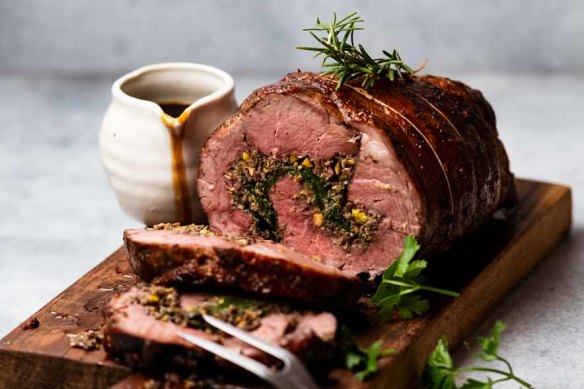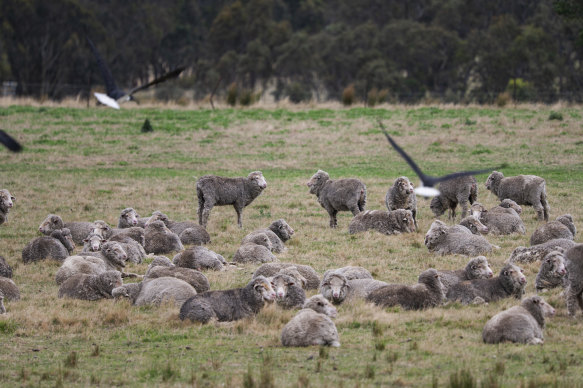By Jessica Yun
Lamb has staged a comeback onto the menus of pubs, clubs and fine dining restaurants as a record volume of the red meat hits the market, driving down prices for diners and grocery shoppers.
An oversupply of sheep livestock led to lamb slaughter figures of nearly 647,000 nationally in the week before Christmas, significantly higher than the typical numbers of 300,000 to 475,000 a week. Lamb prices per kilogram in the final quarter of 2023 were 17 per cent lower than the same period the year before.

Lamb has made a comeback thanks to a record of the volume of the meat nationally.Credit: Nagi Maehashi
“One of the things we know that during COVID was that a lot of foodservice outlets really reduced their menu items. One of the victims of that, in a lot of cases, was lamb,” said Meat & Livestock Australia domestic market manager Graeme Yardy.
Meanwhile, many hospitality operators retained beef steak and chicken parmigiana as core offerings. “What we’ve really seen, as availability has come back over the last 12 months, is a lot more lamb coming back onto menus,” Yardy said.
Larger-scale establishments like stadiums, aged care homes and the leisure industry, such as cruise liners, are also ordering “huge volumes” of lamb, while fast food chains tended to stick to popular protein options of beef, chicken and pork.
Lamb prices have also come down due to lower export demand from major markets as people around the world readjust their budgets to deal with rising prices across the board, said Rabobank senior animal proteins analyst Angus Gidley-Baird.

Australia is experiencing “record volumes” of lamb on the market.Credit: Martin Ollman
“Chinese demand and US demand is very soft. It’s the same as what we’re seeing here: the increased cost of living, change in economic circumstances, interest rates going up, business activity, economic growth is all slower and weaker,” Gidley-Baird said.
“Even though we’ve got very strong export numbers to places like China and the Middle East, I think they’re more a reflection of the cheaper lamb price that we’ve got here. They’re just taking advantage of that rather than an indication of strong demand.”
Farmers are also culling their herds due to El Nino predictions of a drier, hotter seasonal outlook, which has resulted in “record volumes” of lamb production.
“We’ve never seen this much lamb before,” Gidley-Baird. “If you’re producing record volumes of lamb and the global market is very soft, you have to expect prices are a bit weaker.”
At the end of 2022, a kilogram of lamb in carcass weight was trading at $7.58. This fell to $4.33 in October last year and in mid-December had levelled to $6.07.
Australia’s consumption of lamb is also somewhat influenced by interest rates, and retailers hope to see fewer hikes from the Reserve Bank to help lift consumer sentiment and encourage spending.
“Stabilisation of interest rates, I think, will help,” Yardy said. “Food is an interesting category to watch – while you might get some changes in spending, one of the things people tend to do is eat at home or take lunch to work … People are still interested in paying for quality.”
Supermarkets have come under pressure recently to reduce grocery prices amid criticisms of price gouging and profiteering. Coles chief executive Leah Weckert and Woolworths counterpart Brad Banducci have announced they will front the Senate inquiry into supermarket prices led by the Greens.
The first public hearings are expected to begin early this year. The closing date for submissions is February 2.
The Business Briefing newsletter delivers major stories, exclusive coverage and expert opinion. Sign up to get it every weekday morning.